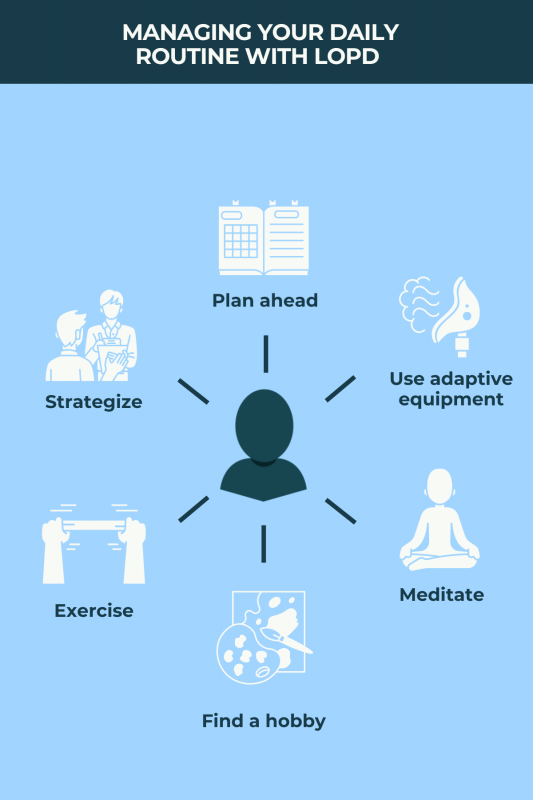
FAQs about LOPD and daily routine
Late-onset Pompe disease, a disease form that may also be referred to as juvenile/adult-onset Pompe disease, is when symptoms begin later in life (after the first year of life), during childhood or adulthood. In general, people with late-onset Pompe tend to have less severe disease manifestations and a slower disease progression.
In the U.S., Pompe disease is estimated to affect one of every 40,000 people, although the disease incidence varies among different ethnic groups. A study in the Netherlands reported an incidence of one in 57,000 newborns per year for late-onset Pompe disease, and one in 138,000 for infantile-onset disease, with a combined Pompe incidence of one in every 40,000 people as well.
Late-onset Pompe disease symptoms typically include progressive muscle weakness, especially in the torso and legs. Patients may develop gait disturbances, and have trouble when they need to stand, run, or climb stairs. Scoliosis, an unusual side-to-side curvature of the spine, also may develop, and respiratory problems and frequent lung infections may occur. Patients with late-onset disease also may experience profound fatigue, chronic pain, headaches, trouble hearing, and digestive issues.
Late-onset Pompe disease patients are encouraged to engage in mild to moderate exercise, as it can both help preserve muscle strength and help the individual better cope with the disease. Recommended exercises include stretching, walking, swimming, strength and resistance training, and evidence suggests that a combination of aerobic, resistance, and core stability exercises offers benefits to Pompe disease patients. Importantly, any exercise plans should be made together with the patient’s healthcare team. Strenuous exercises should be avoided as they may cause more physical damage to the patient.
People with late-onset Pompe disease can have children, as the disease is not thought to affect fertility. However, patients are advised to seek genetic counseling before planning a pregnancy to better understand the chances of having a baby with the disease. Women with late-onset Pompe disease, in particular, can also face some extra health concerns, such as weight gain, which can further complicate already existing muscle weakness and breathing issues, and having a longer postpartum recovery period. Additionally, some patients they may not be physically able to carry or nurse a newborn without help. Late-onset Pompe disease patients are advised to explore family options with their healthcare providers to make the best-informed decisions.
 Fact-checked by
Fact-checked by 




